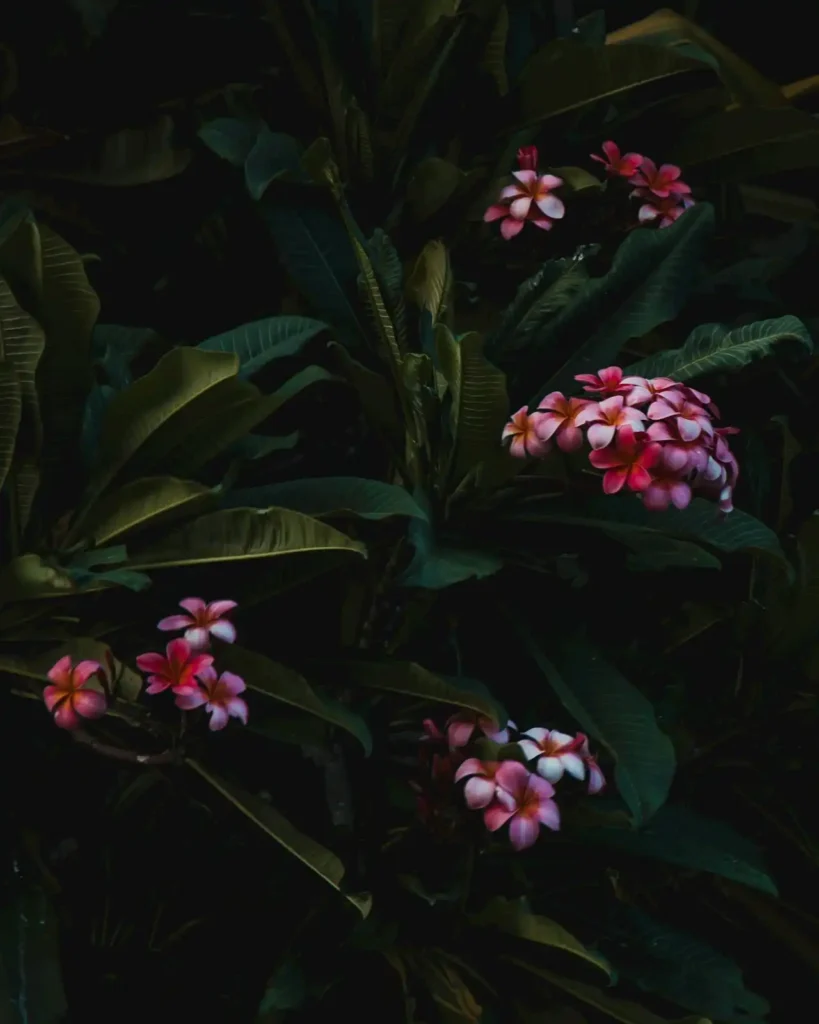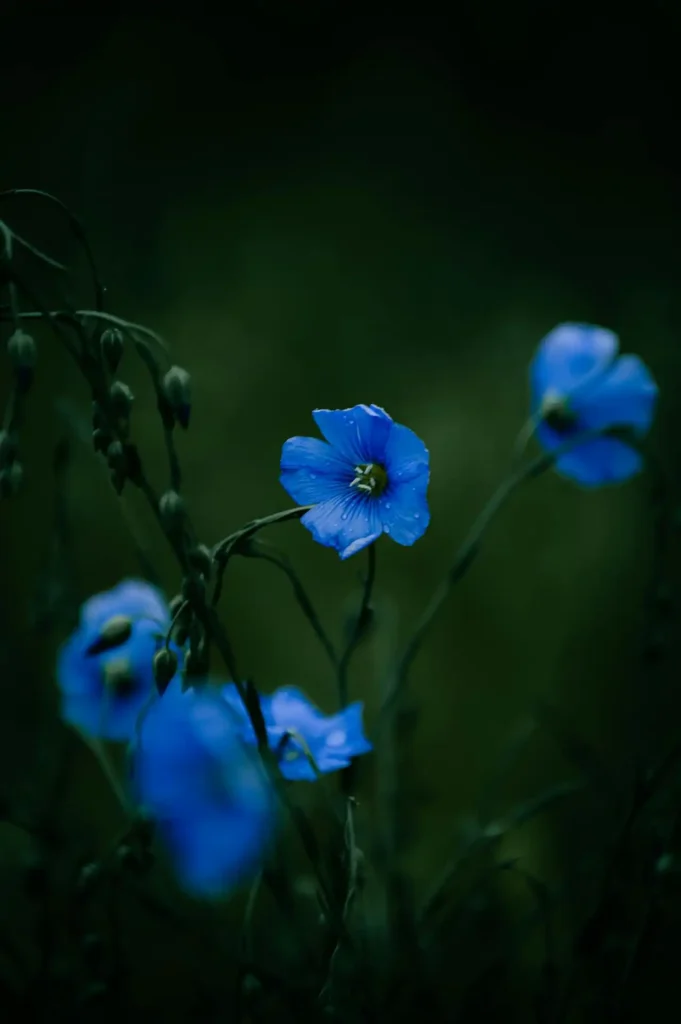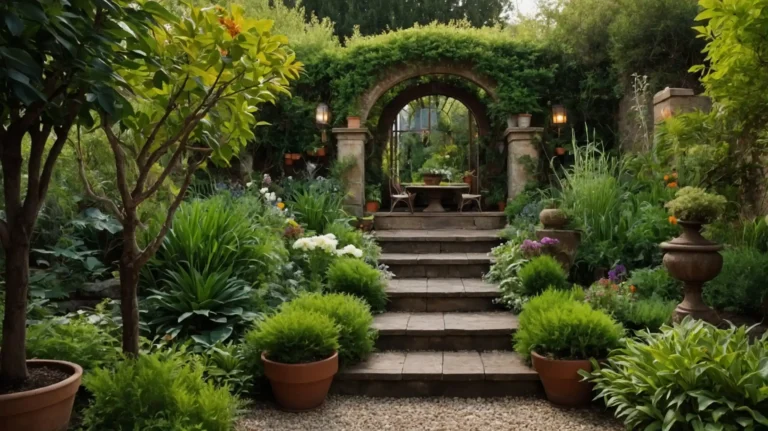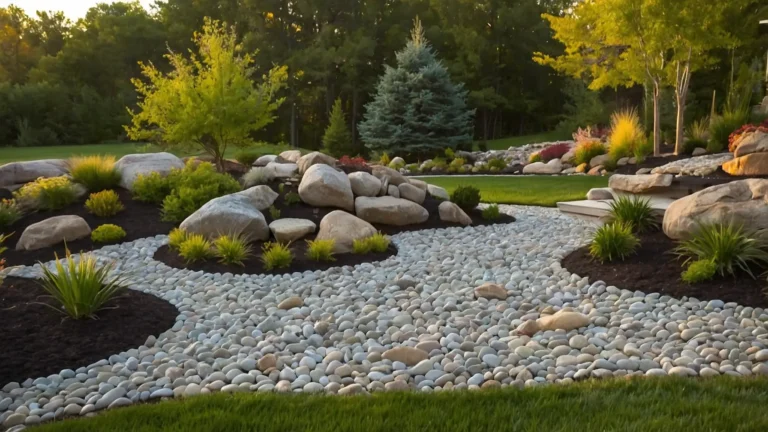Moon Garden Ideas: Plants That Shine at Night
Imagine stepping into your garden as twilight falls and discovering a magical world that comes alive under starlight.
You can create this enchanting experience by designing a moon garden filled with plants that glow, shimmer, and release intoxicating fragrances after dark.
White Flowers That Glow Like Moonbeams

White flowers become luminous beacons in your nighttime garden, reflecting even the faintest moonlight to create an ethereal glow.
You’ll find that these pale blooms seem to float like ghostly apparitions, adding mystery and romance to your outdoor space.
Evening Primrose opens its papery white petals just as the sun sets, creating instant drama in your garden.
You can plant these hardy perennials along pathways where their luminous blooms will guide your steps through the darkness.
The flowers unfurl with such speed that you can actually watch them open if you’re patient enough to observe this nightly spectacle.
White Peonies create massive, ruffled blooms that catch and hold moonlight like silk cushions.
You’ll love how these generous flowers seem to glow from within, their layers of petals creating depth and texture that’s especially striking in low light.
Plant them near seating areas where you can appreciate their subtle beauty during evening gatherings.
Nicotiana produces clusters of trumpet-shaped white flowers that practically luminescence in the dark.
You can choose from tall varieties that create dramatic vertical elements or compact types perfect for containers.
These tobacco plants release their strongest fragrance at night, giving you both visual and aromatic appeal.
White Roses transform your garden into a romantic wonderland when their blooms catch moonlight.
You’ll discover that varieties like ‘Iceberg’ or ‘White Dawn’ climbing roses create spectacular displays against dark fences or walls.
The contrast between their pure white petals and deep green foliage becomes especially pronounced in nighttime lighting.
Night-Blooming Spectacular Show-Stoppers
Some plants save their best performance for after dark, opening magnificent blooms that you can only fully appreciate during nighttime hours.
These nocturnal beauties will give you exclusive access to nature’s most dramatic evening entertainment.
Moonflower vines produce enormous white blooms that unfurl in mere minutes as darkness falls.
You can train these vigorous climbers up trellises, arbors, or fences where their dinner-plate-sized flowers will create stunning focal points.
The blooms emit a sweet fragrance that intensifies throughout the night, attracting night-flying pollinators to your garden.
Four O’clock Flowers burst open precisely when their name suggests, treating you to a daily transformation as colorful tubular blooms emerge from green buds.
You can plant white or pale yellow varieties for maximum moonlight visibility.
These reliable performers will give you months of evening entertainment as you watch their clockwork blooming ritual.
Night-Blooming Cereus offers you one of gardening’s most exclusive experiences. This cactus produces massive, fragrant white flowers that bloom for just one night per year.
You’ll need patience to grow this special plant, but witnessing its rare blooming event creates an unforgettable memory that makes the wait worthwhile.
Evening Stock releases an incredibly intense fragrance that becomes almost intoxicating after sunset.
You can plant these annuals in containers near windows or outdoor seating areas where their perfume will drift indoors.
The small white or pale purple flowers may seem modest during daylight, but their evening fragrance transforms them into garden superstars.
Silver and Gray Foliage That Shimmers
Plants with silvery or gray foliage create the backbone of your moon garden, providing consistent nighttime interest even when not in bloom.
You’ll appreciate how these plants seem to capture and reflect available light, creating a sophisticated palette that works beautifully in evening settings.
Lamb’s Ear spreads soft, velvety silver leaves that seem to glow with their own inner light. The plant maintains its ghostly appearance even after its purple flowers fade.
You can use this low-growing perennial as ground cover or edging along pathways where its fuzzy texture invites touching.
The leaves maintain their silvery appearance year-round in mild climates, giving you consistent nighttime interest.
Dusty Miller provides lacy, silver-white foliage that creates delicate patterns in your moonlight garden.
You can use these compact annuals to fill gaps between larger plants or as edging for formal garden beds.
Their intricate leaf shapes cast beautiful shadows and seem to shimmer when gentle breezes move through the garden.
Artemisia offers you numerous varieties with silvery, aromatic foliage that adds both visual and sensory appeal to nighttime gardens.
You can choose from low-growing types like ‘Silver Mound’ or taller varieties that create dramatic vertical elements.
Many artemisia species release pleasant fragrances when you brush against them during evening strolls.
Russian Sage combines silvery stems with fine-textured gray-green leaves that create an almost ethereal appearance in moonlight.
You’ll love how this drought-tolerant perennial sways gracefully in evening breezes, its entire structure seeming to dance in the pale light.
Fragrant Plants That Perfume the Night

Evening fragrances create an invisible layer of beauty in your moon garden, transforming a simple walk into a sensory journey.
You’ll discover that many plants release their strongest scents after dark, using fragrance to attract night-flying pollinators.
Jasmine vines produce some of the most intoxicating evening fragrances you’ll ever experience.
You can choose from star jasmine with its tiny white flowers or Confederate jasmine with larger, more dramatic blooms.
These vigorous climbers will quickly cover structures while filling your garden with sweet perfume that intensifies on warm, humid evenings.
Tuberose creates tall spikes of waxy white flowers that release an almost overwhelming fragrance after sunset.
You’ll find that just a few bulbs can perfume an entire garden area with their heady scent. Its compact size makes it perfect for containers placed near outdoor seating areas.
Plant these tender bulbs in containers so you can move them closer to seating areas when they’re in bloom.
Night-Blooming Jasmine produces clusters of small, tubular flowers that seem insignificant during daylight but become powerfully fragrant after dark.
You can grow this tropical shrub in containers in cooler climates, bringing it indoors during winter months.
The intensity of its evening fragrance is so strong that a single plant can scent a large area.
Sweet Alyssum carpets garden areas with tiny white flowers that release a honey-like fragrance, especially noticeable during cool evening hours.
You can use this low-growing annual to fill spaces between larger plants or as edging along pathways.
Plants With Interesting Nighttime Textures
Texture becomes especially important in moon gardens where you rely on touch and silhouettes rather than bright colors.
You’ll discover that plants with interesting leaf shapes, bark patterns, or growth habits add crucial design elements to your nighttime landscape.
Ornamental Grasses create movement and sound in your moon garden as evening breezes rustle through their delicate blades.
You can choose varieties like fountain grass or maiden grass that form elegant clumps with graceful, arching stems.
Their seed heads catch moonlight beautifully and provide winter interest long after other plants have gone dormant.
Hosta’s with white or cream variegation create bold patterns that remain visible even in very low light conditions.
You can select varieties with different leaf sizes and patterns to create layered compositions in shaded areas of your moon garden.
Their broad leaves provide important textural contrast to fine-leaved plants and grasses.
White Bark Trees like paper birch or white poplar create striking vertical elements that glow like beacons in your nighttime landscape.
You can position these trees where they’ll catch ambient light from nearby windows or landscape lighting.
Their pale trunks remain visible even on the darkest nights, providing important structural elements.
Succulents with architectural forms create interesting silhouettes and shadows in moonlight.
You can arrange different species in container groupings where their varied shapes and sizes create sculptural compositions.
Many succulents have subtle coloring that becomes more apparent in the soft light of evening hours.
Creating the Perfect Layout for Your Moon Garden
Strategic placement of your nighttime plants maximizes their impact and creates the most enjoyable experience for evening visitors.
You’ll want to consider sight lines, fragrance patterns, and traffic flow when designing your moon garden layout.
Pathway Lighting doesn’t require electricity when you line walkways with white-flowered or silver-leaved plants.
You can create natural guidance systems by placing luminous plants at regular intervals along garden paths.
This approach provides safety while maintaining the magical atmosphere of your moon garden. This creates intimate spaces perfect for evening relaxation.
Seating Area Focus works best when you surround outdoor furniture with your most fragrant plants.
You can position night-blooming jasmine, tuberose, or evening stock within a few feet of benches or chairs where their fragrances will be most appreciated.
Container Gardens give you flexibility to move fragrant or visually striking plants closer to areas where you’ll spend evening time.
You can arrange pots of different heights and sizes to create dynamic compositions that change with the seasons.
This approach also allows you to protect tender plants during winter months.
Water Feature Integration amplifies the sensory experience of your moon garden by adding the sound of moving water to evening fragrances and visual beauty.
You can plant fragrant evening bloomers around fountains or small ponds where their reflections double the visual impact of white flowers and silvery foliage.
Seasonal Planning for Year-Round Moon Garden Interest
Your moon garden can provide nighttime beauty throughout the growing season with careful plant selection and succession planning.
You’ll enjoy discovering how different plants take center stage during various months, creating an ever-changing evening landscape.
Spring Awakens like white tulips, daffodils, and cherry blossoms provide your first moon garden displays of the year.
You can plant early-blooming bulbs in fall to ensure spectacular spring shows. Seed heads and dried stems create interesting silhouettes against winter skies.
White flowering trees create dramatic overhead canopies that filter moonlight into dappled patterns below.
Summer Performers include most of your fragrant annuals and night-blooming specialists. Even dormant moon gardens maintain subtle beauty in winter moonlight.
You can succession plant evening stock and sweet alyssum every few weeks to maintain continuous blooms throughout the hottest months.
This is when your moon garden reaches peak performance with multiple plants blooming simultaneously.
Fall Extensions come from late-blooming perennials and ornamental grasses that provide structure and movement as other plants fade.
You can rely on artemisia, ornamental grasses, and late-flowering white asters to carry your moon garden through autumn months.
Winter Interest depends on evergreen plants, interesting bark, and persistent seed heads that remain attractive through cold months.
You can incorporate white-barked trees, evergreen shrubs with silvery foliage, and ornamental grasses that hold their form through winter.
Maintenance Tips for Nighttime Gardens

Caring for your moon garden requires some special considerations since you’ll likely be observing and enjoying it during evening hours.
You’ll develop new appreciation for your plants when you can watch night-blooming flowers open and experience evening fragrances at their peak intensity.
Evening Watering benefits many moon garden plants since cooler temperatures reduce evaporation and allow plants to absorb moisture more efficiently.
You can combine watering chores with evening garden enjoyment, checking on night-blooming plants as they prepare for their evening show.
This timing also helps you notice any pest or disease issues that require attention. Proper moisture levels also help plants produce stronger fragrances during evening hours.
Deadheading Schedule becomes especially important for continuous-blooming plants like evening stock and sweet alyssum.
You can remove spent flowers during morning garden visits to encourage new bud formation for that evening’s display.
Many night-bloomers produce flowers continuously when you keep them deadheaded regularly.
Fragrance Preservation requires protecting your most aromatic plants from strong winds that can disperse their evening scents.
You can position fragrant plants in sheltered locations or create windbreaks using larger shrubs or structures.
Pest Management takes on new importance since many moon garden plants attract beneficial night-flying pollinators that you don’t want to harm.
You can use organic pest control methods and avoid spraying during evening hours when beneficial insects are most active.
Hand-picking pests during morning garden visits protects your evening pollinators.
Conclusion
Transform your outdoor space into a magical nighttime retreat with carefully chosen plants that shine, shimmer, and perfume the darkness, creating unforgettable evening experiences in your own backyard.







